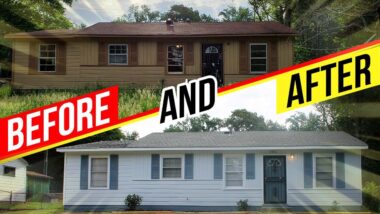REISkills.com – Estimating Repairs & Property Value
Subject: Comprehensive Guide to Estimating Rehabilitation Costs and Property Value for Real Estate Investors
Introduction
This report synthesizes the core principles from the REISkills.com training materials on two critical skills for real estate investors: accurately estimating repair costs and determining a property’s after-repair value. Mastery of these skills is fundamental to calculating profitable purchase offers.
Part 1: – Estimating Repairs
The primary goal of estimating repairs is not to achieve pinpoint accuracy but to establish a reliable ballpark figure, typically rounded to the nearest $1,000, to inform your offer. Over-analyzing at this stage is counterproductive.
1.1. Deal-Type Specific Rehabs
The strategy and quality of repairs are dictated by the intended exit strategy (The Four Deal Quadrants):
-
Wholesaling: Avoid most repairs. The property is flipped “as-is.” However, you must still estimate the rehab cost for the end-buyer to determine your wholesale price. Minor “quick fixes” (e.g., cleaning, yard work, patching leaks) can significantly boost curb appeal and profit, but should not exceed one day’s work for two people.
-
Retailing (Fix & Flip): Repairs must be top-notch to appeal to homebuyers. This includes high-quality finishes like nice light fixtures, brass door handles, quality carpet, and landscaping (e.g., re-sodding). The neighborhood’s class level dictates the rehab standard.
-
Rental (Buy & Hold): Focus on durability and matching the neighborhood’s class. Use commercial-grade linoleum/carpet, semi-gloss paint for easy cleaning, and sturdy, cost-effective fixtures. The property must be appealing enough to attract and retain tenants quickly.
1.2. Key Principles for Estimating
-
Avoid Low-Balling & Cutting Corners: Do not underestimate repairs to make a marginal deal appear profitable. Cutting corners on retail or rental properties leads to longer holding times and reduced appeal.
-
Do Not Do Repairs Yourself: Your time is better spent finding deals. If you cannot afford to pay a professional, you paid too much for the property.
-
Include a Hedge Factor: Add 5-10% to your total repair estimate to cover unforeseen costs.
1.3. Exterior Repair Estimation Guide
| Item | Key Considerations | Estimated Cost Range |
|---|---|---|
| Exterior Paint | Prep for peeling/chalking paint; use neutral eggshell finish with semi-gloss trim. | $700 – $1,200 |
| Rotten Wood | Cheap to replace. Don’t be afraid of it—it scares off less knowledgeable investors. | Low cost (material) |
| Termites | Get an inspection ($50-$75). Live infestation is an opportunity, not a deal-breaker. Treatment and wood replacement are inexpensive relative to the profit potential. | ~$200+ for treatment |
| Roof | Replace if leaking or old; clean if stained. Avoid “roof-overs.” For rentals, consider replacing half at a time to classify as a repair for tax purposes. | $1,800-$2,000 (1200 sq ft) |
| Windows | Replace for retail; ensure they function for rentals. | ~$150 each (installed) |
| Cosmetic Upgrades | Mailbox, porch light, shutters, front door. Dramatically increases curb appeal. | Several hundred dollars |
| Landscaping | Clean up, mulch, add woody plants. Re-sod only if necessary for the neighborhood. | < $500 (without sod) |
| Driveway/Sidewalk | Pressure wash. For cheap rental driveways, consider shingle-tabs. | ~$200 (pressure wash) |
1.4. Interior Repair Estimation Guide
| Item | Key Considerations | Estimated Cost Range |
|---|---|---|
| Ceilings & Walls | Repair stains/holes. Remove paneling. Use “knock-down” texture to hide imperfections. | Low cost (material) |
| Interior Paint | Satin/Eggshell light tan walls; semi-gloss white trim. Use same color for all rentals. | – |
| Doors | Six-panel doors for retail; new brass handles. | – |
| Kitchen | A key selling point. Replace cabinets if questionable. Price out sets at home improvement stores. | Varies widely |
| Appliances | Must be clean/functional. Used is often sufficient. | < $200 each (used) |
| Bathroom | Replace toilet if flawed (~$60). Refinish tub (~$150) instead of replacing. | ~$500 (materials) / ~$1,500 (full gut) |
| Flooring | New, mid-grade carpet for retail. Commercial carpet (glued, no pad) for low-income rentals. | $1.00 – $1.25/sq ft (installed) |
| Window Treatments | Install basic mini-blinds. | $5 – $10 per window |
| CH&A (Central Heat & Air) | Essential. Install if missing. Faster sale/rental and higher rent. | $1,800 (1.5 ton) – $2,200 (2 ton) |
| Electrical System | Upgrade fuse boxes to breaker panels (~$1,200). Ensure 100+ amp service for CH&A. | $700 – $1,200 |
| Plumbing | Re-pipe with CPVC if old. Replace old water heaters. Check septic system carefully. | ~$1,000+ (re-pipe) |
1.5. Learning to Estimate
-
Use a Worksheet: Utilize the provided Repair Estimate Worksheet until you are comfortable.
-
Learn from Others: Visit other investors’ rehab projects to see real-life examples and costs.
Part 2: – Estimating The Property’s Value
The investor’s focus is the After-Repaired Value (ARV)—the property’s projected value once all renovations are complete.
2.1. Appraisal Methods
-
Sales Comparison Approach (Market Approach): The most common and relevant method for investors. It involves comparing the subject property to recently sold, similar properties (“comps”).
-
Income Approach: Used primarily for rental properties. Value is based on the income the property generates (Gross Rent Multiplier).
-
Cost Approach: Based on the cost to rebuild the structure, minus depreciation, plus land value. Least commonly used.
Warning: Never use the tax-assessed value to determine market value. It is unreliable and often significantly lower than the true market value.
2.2. A Simple Investor’s Method for Estimating ARV
Using the Sales Comparison Approach, investors can use two straightforward calculations.
Step 1: Find Good Comps
Find 3-4 properties that have sold in the last 6 months within a 1-2 mile radius, with similar:
-
Construction, age, and size (+/- 15% square footage).
-
Number of bedrooms and bathrooms.
Step 2: Run the Numbers (Using the Provided Property Value Worksheet)
-
Method 1: Average Sale Price
-
Add the sale prices of the three comps.
-
Divide the total by three.
-
This is your estimated ARV.
-
-
Method 2: Price Per Square Foot
-
Add the total sale prices of the three comps.
-
Add the total square footage of the three comps.
-
Divide the total sale price by the total square footage to get the average price per square foot.
-
Multiply this average by the square footage of your subject property.
-
This is your estimated ARV.
-
Conclusion
Success in real estate investing hinges on the ability to quickly and accurately estimate both repair costs and a property’s end value. By understanding the different rehab standards for wholesaling, retailing, and rentals, and by mastering the basic “comp” analysis for valuation, an investor can confidently calculate offers that ensure profitability while mitigating risk. The key is to be in the right ballpark, not to be perfect on the first walk-through.



